ShopDreamUp AI ArtDreamUp
Deviation Actions
The Need for Change
Creating and maintaining categories that meet the needs of audience and artists alike is always a challenge. Photography, as it has been since its inception, is constantly changing, as its tools and methods evolve. The introduction of the digital production and storage of images radically altered the implementation of photography forever, and while we do not encourage the general division of photography into traditional and digital, it is important to create spaces where photographers feel comfortable posting their work. One way that we can address the needs of the photography community is to divide the darkroom into two subcategories, digital darkroom and traditional darkroom. Since this popular umbrella category is defined by process rather than content, it does, in this instance, make sense to distinguish between the digital and analog tools that achieve the intended results. In fact, photography gallery director Staged ran a poll staged.deviantart.com/journal/… in her journal, and the results were overwhelmingly in favor of creating a division between digital and traditional darkrooms. We believe that the division will nicely serve two groups of photographers who define their work by the ways in which they create it. The following of us were involved in the process of dividing this category into two and will be happy to take your questions and comments:





Digital Darkroom
The addition of this category provides a space for photographers who use digital tools to finish their uniquely digital photographs. Currently, these artists find that their pieces belong neither in photomanipulation nor in darkroom, as defined by processes that emulate what could be done in a darkroom. While these images might be significantly enhanced by the use of textures, brushes, selective or global color adjustments, use of HDR, the stitching together of panoramic images, the use of the clone stamp to tidy up the photograph, etc., in concept they remain photographs. A photomanipulation, on the other hand, is an image that has been composed of two or more photos to create something new. Examples of manipulations include putting a subject in a different setting by cutting the subject from its original photograph and using it in another, using so many textures that the original photo is no longer recognizable, creating new landscapes or scenes from a collection of photos. What distinguishes the images to be located in this new category from photomanipulations is that the image processing is executed in such a manner that the focus remains on the photo and not on the manipulation. Following are the techniques allowed and encouraged to be posted in Digital Darkroom along with some examples of pieces that would nicely reside in the digital darkroom:
Photography -> Darkroom -> Digital
:thumb29924466: :thumb62902004: :thumb61971505:

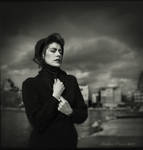
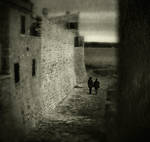

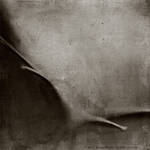
Traditional Darkroom
Currently, film photographers find more and more that the space reserved for darkroom has been taken over by works created using digital processes and by digital emulations of what could be done in the darkroom. The creation of this category provides a gallery where traditional pieces can reside among like pieces. Those artists who use make use of the tools of traditional photography can place their images here, knowing that they will be seen in a context that allows their pieces to be prominent. Following are the techniques allowed and encouraged to be posted in Traditional Darkroom along with some examples of pieces that would nicely reside in the traditional darkroom:
Photography -> Darkroom -> Traditional
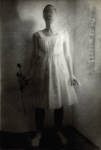
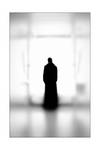 :thumb56324052:
:thumb56324052:
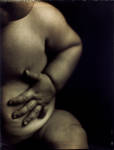

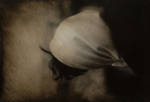
:thumb37141678: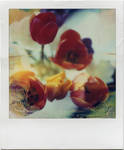
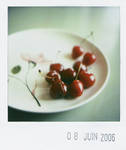
We are always striving to make deviantART inclusive and to reasonably serve the overall wishes of the photography community. Deviations currently located in the general darkroom category will remain there, however, you are encouraged to relocate your pieces to the new subcategory that suits your pieces so that they can better be found and appreciated! We hope that all of you photographers out there who like to identify your work by how you achieved your results will enjoy the galleries refined to reflect the current trends in the post-processing of photography!
equivoque, hellfirediva, and Staged
Photography is alive and well and living on the daily features pages!
Creating and maintaining categories that meet the needs of audience and artists alike is always a challenge. Photography, as it has been since its inception, is constantly changing, as its tools and methods evolve. The introduction of the digital production and storage of images radically altered the implementation of photography forever, and while we do not encourage the general division of photography into traditional and digital, it is important to create spaces where photographers feel comfortable posting their work. One way that we can address the needs of the photography community is to divide the darkroom into two subcategories, digital darkroom and traditional darkroom. Since this popular umbrella category is defined by process rather than content, it does, in this instance, make sense to distinguish between the digital and analog tools that achieve the intended results. In fact, photography gallery director Staged ran a poll staged.deviantart.com/journal/… in her journal, and the results were overwhelmingly in favor of creating a division between digital and traditional darkrooms. We believe that the division will nicely serve two groups of photographers who define their work by the ways in which they create it. The following of us were involved in the process of dividing this category into two and will be happy to take your questions and comments:
Digital Darkroom
The addition of this category provides a space for photographers who use digital tools to finish their uniquely digital photographs. Currently, these artists find that their pieces belong neither in photomanipulation nor in darkroom, as defined by processes that emulate what could be done in a darkroom. While these images might be significantly enhanced by the use of textures, brushes, selective or global color adjustments, use of HDR, the stitching together of panoramic images, the use of the clone stamp to tidy up the photograph, etc., in concept they remain photographs. A photomanipulation, on the other hand, is an image that has been composed of two or more photos to create something new. Examples of manipulations include putting a subject in a different setting by cutting the subject from its original photograph and using it in another, using so many textures that the original photo is no longer recognizable, creating new landscapes or scenes from a collection of photos. What distinguishes the images to be located in this new category from photomanipulations is that the image processing is executed in such a manner that the focus remains on the photo and not on the manipulation. Following are the techniques allowed and encouraged to be posted in Digital Darkroom along with some examples of pieces that would nicely reside in the digital darkroom:
Photography -> Darkroom -> Digital
- Images containing one photo (images incorporating more than one photo belong in photomanipulation)
- Brightness/contrast, Levels, Curves
- Color enhancements
- Addition of textures (credit must be given to providers of resources unless original textures by artist are used)
- Addition of brushes (credit must be given to providers of resources unless original brushes by artist are used)
- Use of HDR techniques and software
:thumb29924466: :thumb62902004: :thumb61971505:





Traditional Darkroom
Currently, film photographers find more and more that the space reserved for darkroom has been taken over by works created using digital processes and by digital emulations of what could be done in the darkroom. The creation of this category provides a gallery where traditional pieces can reside among like pieces. Those artists who use make use of the tools of traditional photography can place their images here, knowing that they will be seen in a context that allows their pieces to be prominent. Following are the techniques allowed and encouraged to be posted in Traditional Darkroom along with some examples of pieces that would nicely reside in the traditional darkroom:
Photography -> Darkroom -> Traditional
- Scans of prints from plates or negatives
- Scans of plates or negatives
- Moderate digital adjustments to remove dust or to fix brightness/contrast and color resulting from scanners

 :thumb56324052:
:thumb56324052: 


:thumb37141678:


We are always striving to make deviantART inclusive and to reasonably serve the overall wishes of the photography community. Deviations currently located in the general darkroom category will remain there, however, you are encouraged to relocate your pieces to the new subcategory that suits your pieces so that they can better be found and appreciated! We hope that all of you photographers out there who like to identify your work by how you achieved your results will enjoy the galleries refined to reflect the current trends in the post-processing of photography!
equivoque, hellfirediva, and Staged
Photography is alive and well and living on the daily features pages!
Greetings, Fun News and Found Photography!
Stopping by to say hello to friends I miss because I don't see them on Facebook or at other online stops. Hope everyone is well and making good art!
I had written that I was training for a half-marathon in my last journal, but I did better than that! I ran a marathon in October and am planning to run another in January and then again in June! Hoping to qualify for Boston within a year.
The best news is that I got to meet yet another "deviant" in real life. Even though deviantART is no longer a part of my life, really, I met some valuable contacts and friends on this site. So far I have meet cweeks (https://www.deviantart.com/cweeks), futurowoman (https://www.deviantart.com/futurowoman), and now :devrha
The Elusive Finish Line
Just popping in to say hello again. Hope everyone is well and making good art!
My busy schedule doesn't permit me to do too much with photography lately. My workload at my job has been steadily increasing, which I guess is a good thing in some ways. Our oldest son is now living at home and joined us with his adorable cat, Percy. I've been running 36 miles per week and am training for a half-marathon scheduled to take place on September 13th.
Here are a few features. :-)
Thank you for visiting! :heart:
Elinor
equivoquephoto
my flickr photostream
elinor on facebook
The DD's I posted are here! ;-)
photos i love
what i've been up
Tower of Song
Just popping in to say hello. Hope everyone is well and making good art!
My husband intao (https://www.deviantart.com/intao) and I attended the Leonard Cohen concert last week in Minneapolis. There aren't really words to adequately describe just what a great show it was! Anyway, here's a humble BlackBerry shot from the occasion.
Thank you for visiting! :heart:
Elinor
equivoquephoto
my flickr photostream
The DD's I posted are here! ;-)
photos i love
:thumb116082299: :thumb121983041: :thumb99553949:
:thumb121454305: :thumb121721545: :thumb119580336:
what i've been up to
~Clementine98 (https://www.deviantart.com/clementine98)
:thumb77558051: :thumb77558249: :thumb77558387:
Family & Friends
:i
Linen n Things (and a few features)
Lately I've been traveling in different directions. Currently I'm putting together the materials to make jewelry that incorporates my Polaroid photography. In the meantime, I've listed a couple of pair of earrings in addition to linen postcard sets in my shop. I've also reorganized my Etsy shop to include a couple new sections (in addition to the ordinary photography and Polaroid photography sections that have always existed):
✻ The Jewelry Box (jewelry made from Czech glass, Swarovski crystal, and Polaroid photography)
✻ Art of Correspondence (high quality postcards, photo cards, and greeting cards)
✻ ACEOs (collecti
© 2007 - 2024 equivoque
Comments143
Join the community to add your comment. Already a deviant? Log In
Hope this thread is still being monitored. I have a question and I did read this article and others first before asking. For traditional darkroom the article states, "Scans of prints from plates or negatives" would belong. So does this mean if I scanned one of my old 35mm photos which creates a digital image and then enhanced it to remove noise, dust, adjust the color, and maybe a few other enhancements because the scan didn't turn out so well would this be Traditional or Digital Darkroom.
Well here is the photograph I am referring to [link] which I put into the Photography/Darkroom/Digital/Micellaneous Processes category. And here is what I finally did to the Niagara Falls photo which I actually put in Digital Art/Miscell./Landscapes & Scenery. I am not sure if either of these are technically in the right category. I am sorry I am new to the photography section and am more familiar with the Photomanipulation category which neither of these belong to.
Thanks so much for your time in reading and answering this. I want to be sure to understand in case I submit other deviations along these lines.
Well here is the photograph I am referring to [link] which I put into the Photography/Darkroom/Digital/Micellaneous Processes category. And here is what I finally did to the Niagara Falls photo which I actually put in Digital Art/Miscell./Landscapes & Scenery. I am not sure if either of these are technically in the right category. I am sorry I am new to the photography section and am more familiar with the Photomanipulation category which neither of these belong to.
Thanks so much for your time in reading and answering this. I want to be sure to understand in case I submit other deviations along these lines.